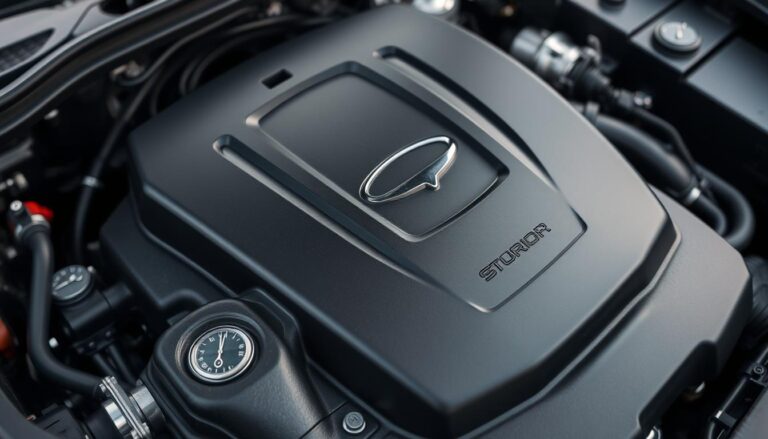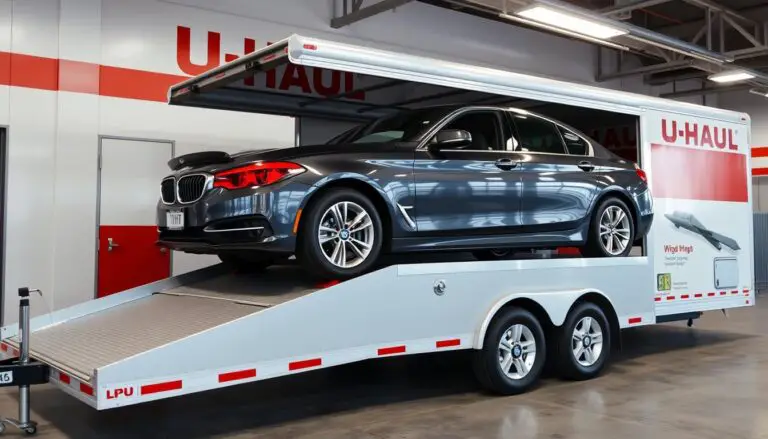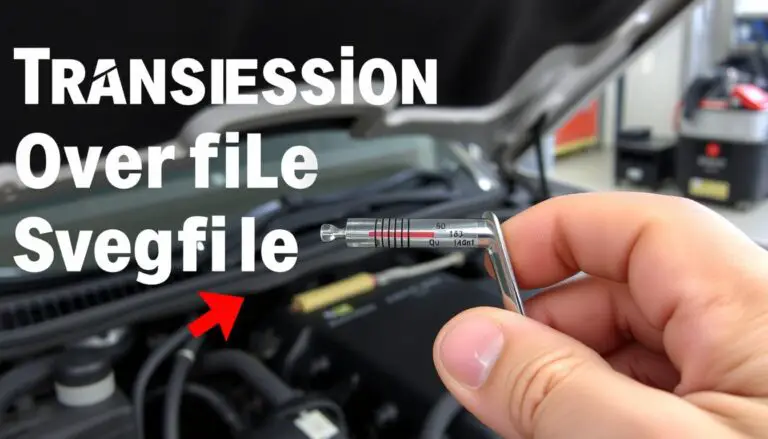A vehicle’s stator is a crucial component of its electrical system, playing a key role in charging the battery and powering electrical accessories. When the stator fails, it can lead to a range of problems, from dim or flickering headlights to a dead battery.
Identifying bad stator symptoms early on is vital to prevent further damage and costly repairs. Understanding the common causes of stator failure and knowing how to address them can save time and money.
Key Takeaways
- Recognizing the signs of a failing stator
- Understanding the role of the stator in vehicle performance
- Learning the common causes of stator failure
- Discovering effective fixes for stator problems
- Preventing future stator-related issues
Understanding the Stator: Function and Importance
Understanding the stator’s function is essential for diagnosing and fixing electrical issues in vehicles. The stator is a critical component of a vehicle’s electrical system, and its proper functioning is vital for optimal engine performance.
What Is a Stator and How Does It Work?
The stator is a stationary part of an electrical generator or motor, converting mechanical energy into electrical energy or vice versa. In the context of a vehicle, the stator works in conjunction with other components to generate the electrical power needed to run the vehicle’s systems.
The stator’s operation involves the principles of electromagnetic induction, where the movement of a magnetic field induces an electrical current in the stator’s coils. This process is fundamental to the generation of electrical power in a vehicle.
The Role of the Stator in Your Vehicle’s Electrical System
The stator plays a pivotal role in maintaining the health and efficiency of a vehicle’s electrical system. By generating electrical power, it supports various vehicle functions, from lighting and entertainment systems to critical engine components.
Issues with the stator can lead to a range of problems, including electrical system malfunctions and decreased engine performance.
Bad Stator Symptoms: Common Causes and How To Fix Them
Bad stator symptoms can be diverse, affecting different aspects of your vehicle’s performance, and understanding these symptoms is vital for effective troubleshooting. The stator is a crucial component of your vehicle’s electrical system, responsible for generating the power needed to run various electrical components.
Electrical Issues and Warning Signs
One of the primary indicators of a bad stator is electrical issues. These can manifest as dim or flickering headlights, dashboard lights that are not functioning correctly, or other electrical accessories malfunctioning. If you notice any of these signs, it’s essential to investigate further.
Some common electrical issues associated with a faulty stator include:
- Dim or flickering headlights
- Malfunctioning dashboard lights
- Other electrical accessories not working correctly
Engine Performance Problems
A bad stator can also affect your vehicle’s engine performance. Symptoms may include difficulty starting the engine, stalling, or a general decrease in performance. These issues occur because the stator is not generating enough power to support the engine’s electrical needs.
| Symptom | Cause | Effect |
|---|---|---|
| Difficulty starting the engine | Insufficient power generation | Engine may stall or not start |
| Stalling | Intermittent power supply | Engine performance is affected |
| Decrease in performance | Inadequate power for electrical components | Overall vehicle performance is compromised |
Battery-Related Symptoms
A faulty stator can also impact your vehicle’s battery. If the stator is not charging the battery properly, you may notice that the battery is draining faster than usual. This can lead to the battery dying prematurely, requiring more frequent replacements.
Some common battery-related symptoms include:
- Battery draining quickly
- Frequent need for jump-starts
- Battery dying prematurely
Diagnosing a Faulty Stator: Step-by-Step Process
A faulty stator can be diagnosed using a combination of visual inspections and electrical testing. This approach ensures that you can accurately identify stator issues and take corrective action.
Visual Inspection Techniques
Begin by performing a visual inspection of the stator and its surrounding components. Look for signs of physical damage, such as cracks, burns, or corrosion. Check the wiring and connections for any signs of wear or damage. A visual inspection can provide valuable insights into the condition of the stator.

Multimeter Testing Procedures
To further diagnose the stator, use a multimeter to perform electrical tests. There are two primary tests: AC voltage output testing and resistance testing.
AC Voltage Output Testing
AC voltage output testing measures the voltage produced by the stator. Set your multimeter to the AC voltage setting and connect it to the stator’s output wires. Rotate the engine or crankshaft to generate voltage. Compare the measured voltage to the manufacturer’s specifications.
Resistance Testing
Resistance testing checks the stator’s windings for any signs of damage or wear. Set your multimeter to the ohms setting and measure the resistance between the stator’s output wires. Compare the measured resistance to the manufacturer’s specifications.
Interpreting Test Results Across Vehicle Types
The interpretation of test results can vary depending on the vehicle type. For motorcycles and ATVs, compare the measured voltage and resistance values to the manufacturer’s specifications. For marine and small engines, consider the specific requirements and tolerances for the stator.
Motorcycles and ATVs
For motorcycles and ATVs, a functioning stator should produce a voltage within the specified range. Check the owner’s manual or manufacturer’s documentation for the correct voltage and resistance values.
Marine and Small Engines
Marine and small engines have specific requirements for stator performance. Consult the manufacturer’s documentation to determine the acceptable voltage and resistance ranges for your particular engine.
| Vehicle Type | Voltage Range | Resistance Range |
|---|---|---|
| Motorcycles and ATVs | 20-50V AC | 0.1-1.0 ohms |
| Marine and Small Engines | 50-100V AC | 0.5-2.0 ohms |
By following these steps and interpreting the test results correctly, you can accurately diagnose stator issues and take the necessary corrective action.
Common Causes of Stator Failure
The longevity and performance of a stator depend on various factors, including its age, the electrical system’s condition, and environmental influences. Understanding these factors is crucial for diagnosing and preventing stator failure.
Age and Normal Wear
Like any other component, stators are subject to aging and wear. Over time, the insulation around the stator windings can deteriorate, leading to short circuits and reduced efficiency. Regular maintenance can help identify wear early, but eventual replacement is inevitable.
Electrical System Overloads
Overloading the electrical system can put undue stress on the stator, leading to premature failure. This can happen when too many accessories are added to the system without upgrading the stator’s capacity. Ensuring that the electrical system is balanced and not overloaded is crucial for the stator’s longevity.
Environmental Factors and Damage
Environmental factors such as extreme temperatures, moisture, and physical damage can significantly impact the stator’s performance. For instance, exposure to water can lead to corrosion, while extreme heat can cause the insulation to degrade faster. Protecting the stator from harsh conditions can help extend its lifespan.
| Cause of Failure | Description | Preventive Measures |
|---|---|---|
| Age and Normal Wear | Deterioration of insulation around stator windings over time. | Regular maintenance, timely replacement. |
| Electrical System Overloads | Undue stress on the stator due to excessive load. | Balance electrical system load, upgrade stator capacity if necessary. |
| Environmental Factors | Damage from extreme temperatures, moisture, and physical harm. | Protect stator from harsh conditions, ensure proper sealing. |

How to Replace or Repair a Bad Stator
Replacing a bad stator is a relatively straightforward process that can be done with the right tools and knowledge. Before starting, it’s essential to understand the steps involved and the materials needed.
Tools and Materials Needed
To replace or repair a stator, you’ll need a few specialized tools and materials. These include:
- A multimeter for testing electrical circuits
- A socket set for accessing the stator
- A new stator compatible with your vehicle’s make and model
- Insulation tape and wire connectors for securing electrical connections
Step-by-Step Replacement Guide
Accessing the Stator
The first step is to access the stator, which is usually located near the engine. You’ll need to remove any protective covers or casings to expose the stator. Consult your vehicle’s manual for specific instructions.
Removing the Old Stator
Once you have access, carefully disconnect the electrical connectors attached to the stator. Use a socket set to remove any bolts holding the stator in place. Gently pull the stator out of its housing.
Installing the New Stator
To install the new stator, reverse the steps used for removal. Ensure that all electrical connectors are securely attached and that the stator is properly seated in its housing. Tighten any bolts to the recommended torque specification.
Testing After Installation
After installing the new stator, use a multimeter to test the electrical output. Compare your readings to the specifications provided in your vehicle’s manual to ensure everything is functioning correctly. For more detailed information on diagnosing stator issues, you can visit this resource.
DIY vs. Professional Repair: Costs and Considerations
When deciding whether to replace or repair a stator yourself or hire a professional, consider the costs and your level of expertise. DIY repair can save money but requires specialized tools and knowledge. Professional repair ensures the job is done correctly but at a higher cost. Weigh these factors based on your situation.
Conclusion: Preventing Future Stator Problems
Maintaining your vehicle’s stator is crucial for optimal performance and longevity. Regular stator maintenance can help prevent common issues such as overloading, voltage imbalances, and harmonic distortion, which can lead to stator overheating and insulation degradation.
To prevent stator problems, ensure good power quality by maintaining stable voltage, minimal distortion, and balanced phases. Installing surge protection on motor control circuits and at the facility’s service entrance can also protect against voltage surges and transients. For more information on motor control failures and fixes, visit Breaker Hunters.
Regular inspections and maintenance, such as tightening electrical connections and ensuring cooling pathways are not obstructed, can also help prevent stator issues. By following these tips and staying proactive, you can help extend the lifespan of your stator and maintain your vehicle’s overall performance.
FAQ
What are the common symptoms of a bad stator?
Common symptoms include electrical issues, engine performance problems, and battery-related symptoms such as dim or flickering lights, difficulty starting the engine, and a dead battery.
How do I diagnose a faulty stator?
Diagnosing a faulty stator involves a step-by-step process, including visual inspection techniques, multimeter testing procedures, and interpreting test results across different vehicle types.
What causes stator failure?
Common causes of stator failure include age and normal wear, electrical system overloads, and environmental factors such as heat, moisture, and physical damage.
Can I replace a bad stator myself?
Yes, you can replace a bad stator yourself with the right tools and materials, following a step-by-step replacement guide. However, it’s essential to consider the pros and cons of DIY repair versus professional repair, including costs and considerations.
How do I test a stator with a multimeter?
Testing a stator with a multimeter involves AC voltage output testing and resistance testing to determine if the stator is functioning correctly.
What are the benefits of replacing a faulty stator?
Replacing a faulty stator can improve engine performance, prevent electrical system damage, and ensure reliable starting and operation of your vehicle.
How often should I inspect my stator?
Regular inspections are crucial to prevent future stator problems. It’s recommended to inspect your stator during routine maintenance checks, depending on the vehicle type and usage.
Can a bad stator cause damage to other components?
Yes, a bad stator can cause damage to other components in the electrical system, including the battery, wiring, and other electrical accessories.


